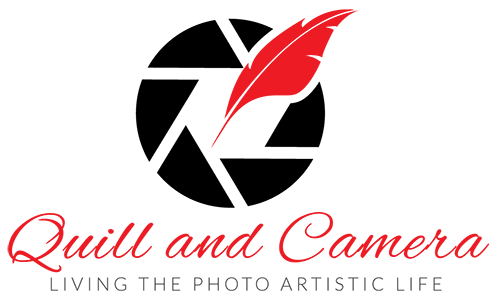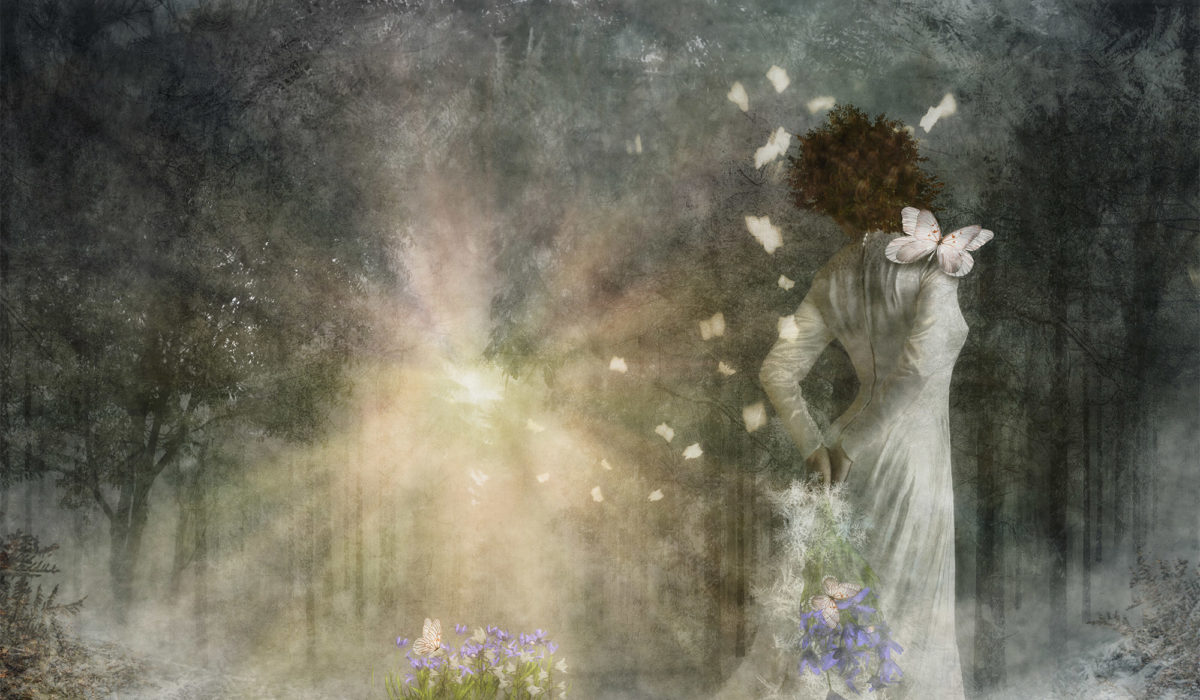— The featured artist of Issue 40 of Living the Photo Artistic Life magazine, AWAKE artist Lauren Martin (based in Colorado) has been an artist for a long time. But it was when she stepped into Photoshop that everything truly opened up for her. I think you’re really going to enjoy my interview with her here on Quill and Camera . . .
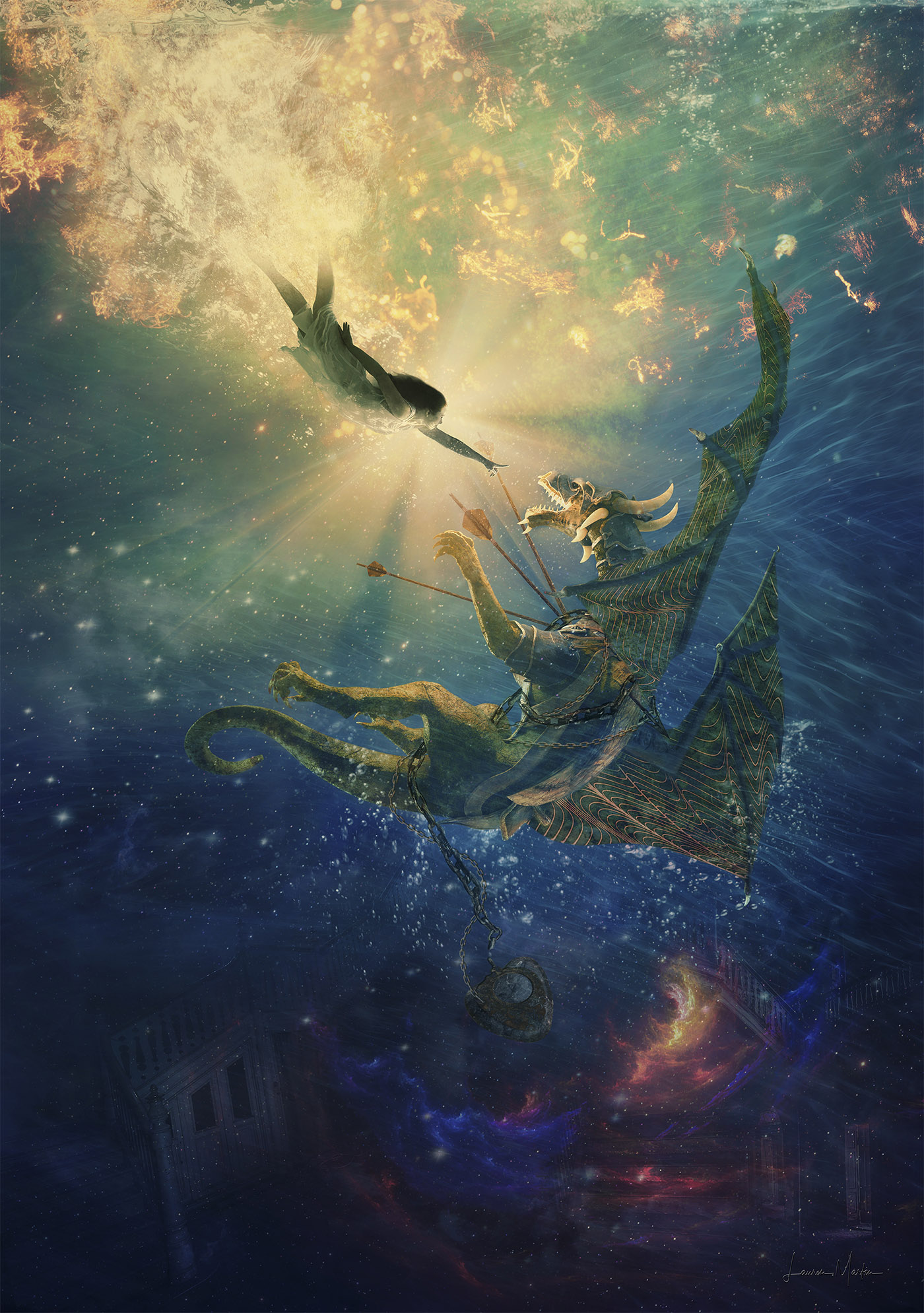
Q. Tell us a little about your artistic background.
Though I always had a longing to be artistic, I just never had the skills or the opportunity to learn as a youngster. In college I did take an art class but didn’t do too well since I always wanted to take the assignment in a different direction, where my own imagination and ideas wanted to lead. That didn’t go over too well and I was left feeling wholly inadequate.
Many years later I discovered I could draw and began working in pencil and colored pencil. I was actually privileged to be awarded Best of Show for one of my drawings at our large County Fair, and I suppose that’s when I first thought maybe there was a little something to what I was doing.
Life changes required me to set aside the daily drawing. Two things happened at this time. My husband got me an iPhone and a DSLR that could take in-camera bracketed exposures, which allowed me to then play with HDR photography and photo-editing. He even bought me Photoshop. Though my thought then was: What in the heck is Photoshop? I had no idea, but soon enough I added multiple plug-ins and spent hours reading books and watching You Tube in order to learn. I had to drive half an hour into town and sit in a coffee shop to watch the videos on my computer since we didn’t have enough bandwidth at home for streaming.
While I learned Photoshop a bit at a time, I spent hours using editing apps on my phone and this is where I really began gaining skills and an understanding of digital artistry that later carried into creating more extensively on my computer.
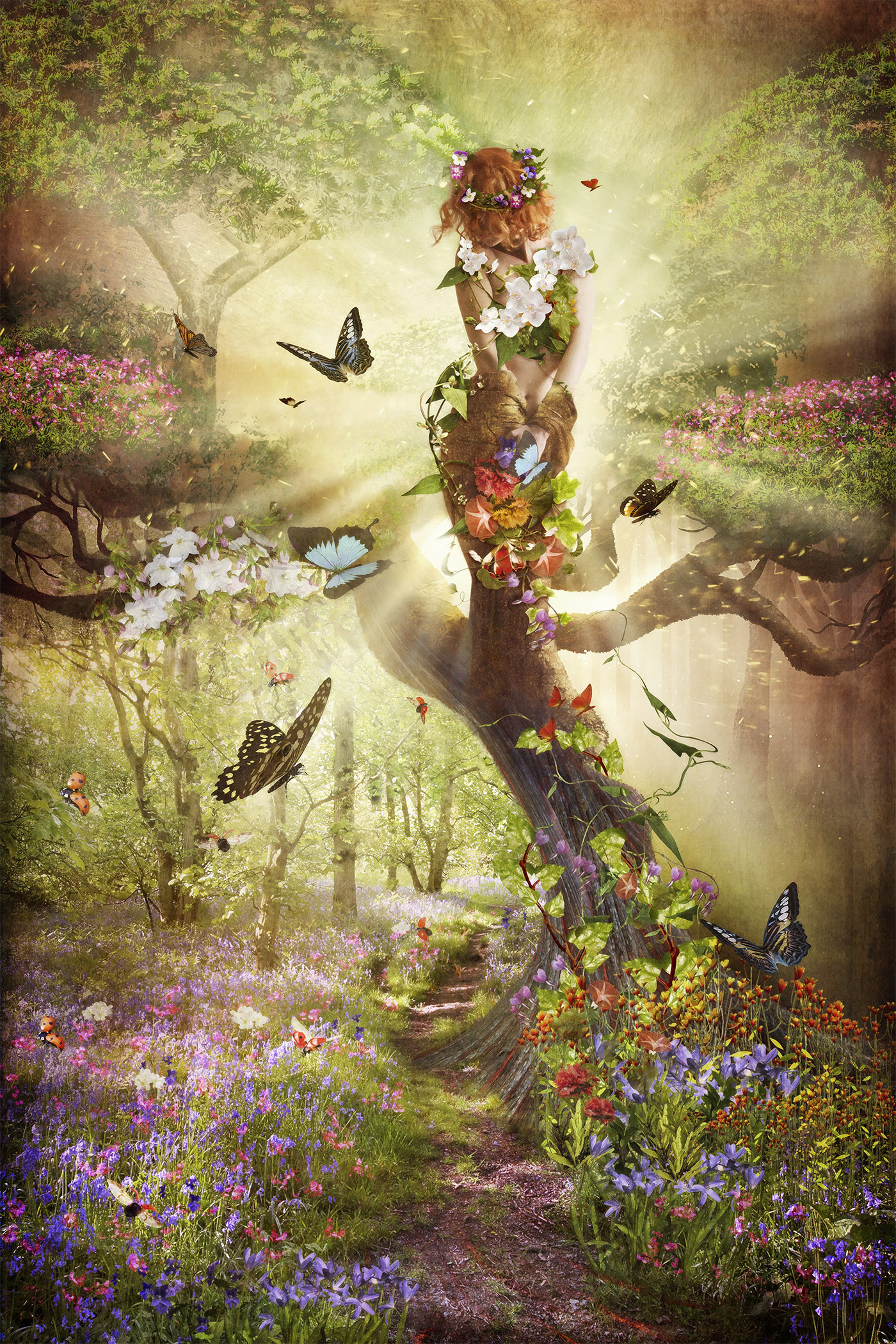
I spent eight years largely concentrating on landscape photography, and edited with abandon. I never disguised the fact that all my photos were “messed with” to some extent. This is where I learned Photoshop and began with Corel Painter.
Though the landscapes and cityscapes were not postcard pure in style, they were well received and I do have work that hangs in office buildings, public buildings, and private homes, as well as images that have won awards.
Even so, eventually I become bored and and grew into a deeper desire to be more creative in this digital world of art. I admired composite digital art and was also drawn to painted photos and wanted to learn about how to do all of that skillfully.
Which is right when I got an offer to join Photoshop Artistry. And it wasn’t long after that, really, that I finally felt I had become a real artist.
Q. What would you say feeds your artistic vision?
Well, I collect art that inspires me and I frequently look through the Inspiration file on my computer. Much that’s in that folder comes from other artists in the “AWAKE” group.
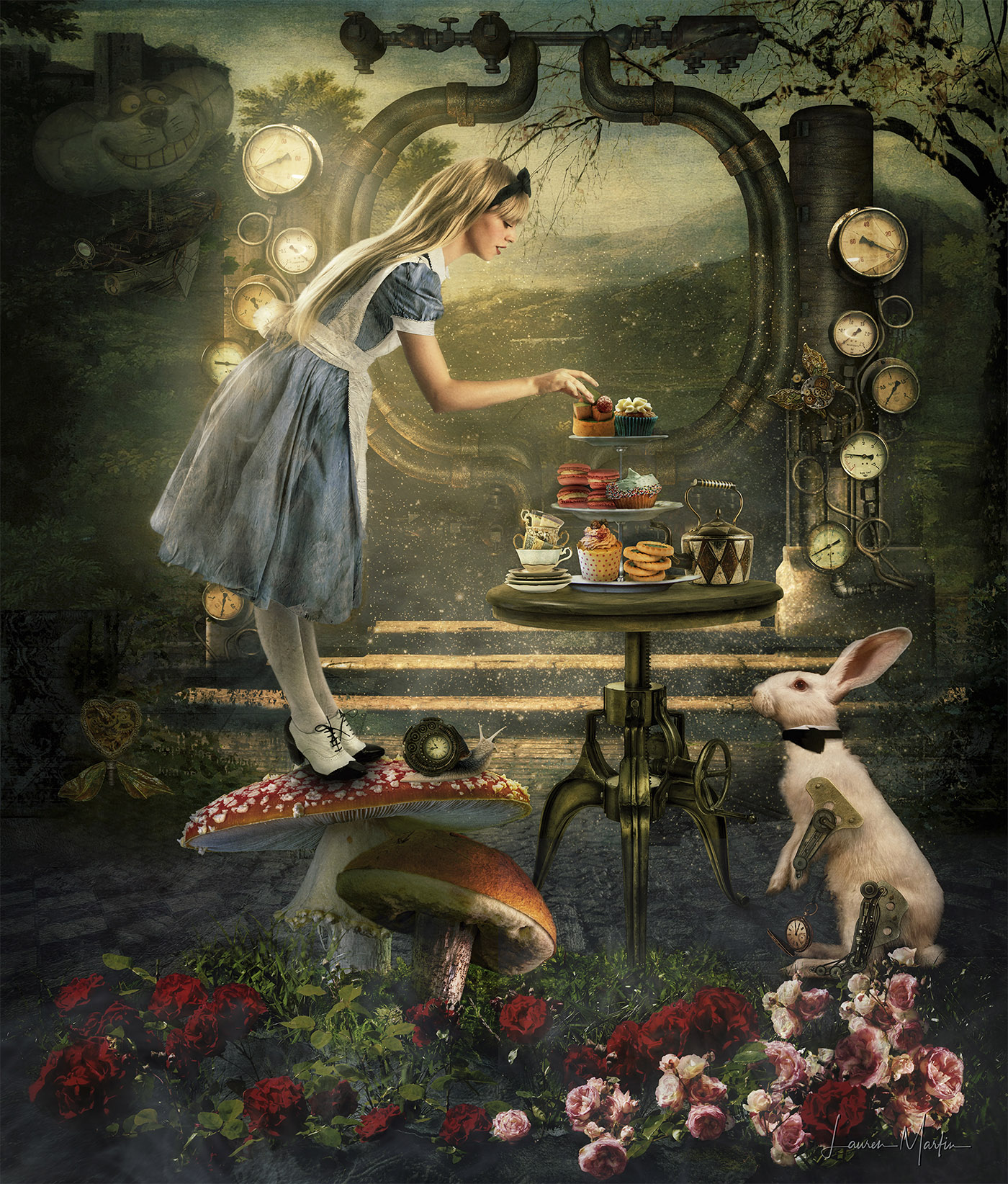
But what feeds my artistry most would have to be movies. My husband has been in the movie and film industry for most of our marriage, so movies have always been a big part of my life. It’s the storytelling that reaches into my emotions and imagination. I love it when the story unfolds sideways so that I am required to be patient and pay attention to what seems hidden, and then at the end the pieces fall into place. This has greatly impacted the way I approach my composite art.
I’m afraid “simple” is a thing I’m not so good at just yet because I’m always wanting to build layers of story or of light, places within a piece for the viewer to catch an emotion from the work, or to notice another thing perhaps missed at first glance. I haven’t perfected this yet, but it’s the direction I often take.
When it comes to my artistic focus, I’d say I’m most fascinated by light, shape, form, as well as movement and the unexpected. I love telling a story, but also enjoy relaxing into pieces that have no story or message but that are simply artistic expressions.
I almost always use elements repeatedly in a work, transforming, deconstructing, rearranging and recreating and then blending in sometimes to the point of near invisibility. There is a subliminal aspect to art, as there is to music, so that even what you can’t distinctly see or hear is still registered by the mind on some level and contributes to the complexity and completeness of a piece.
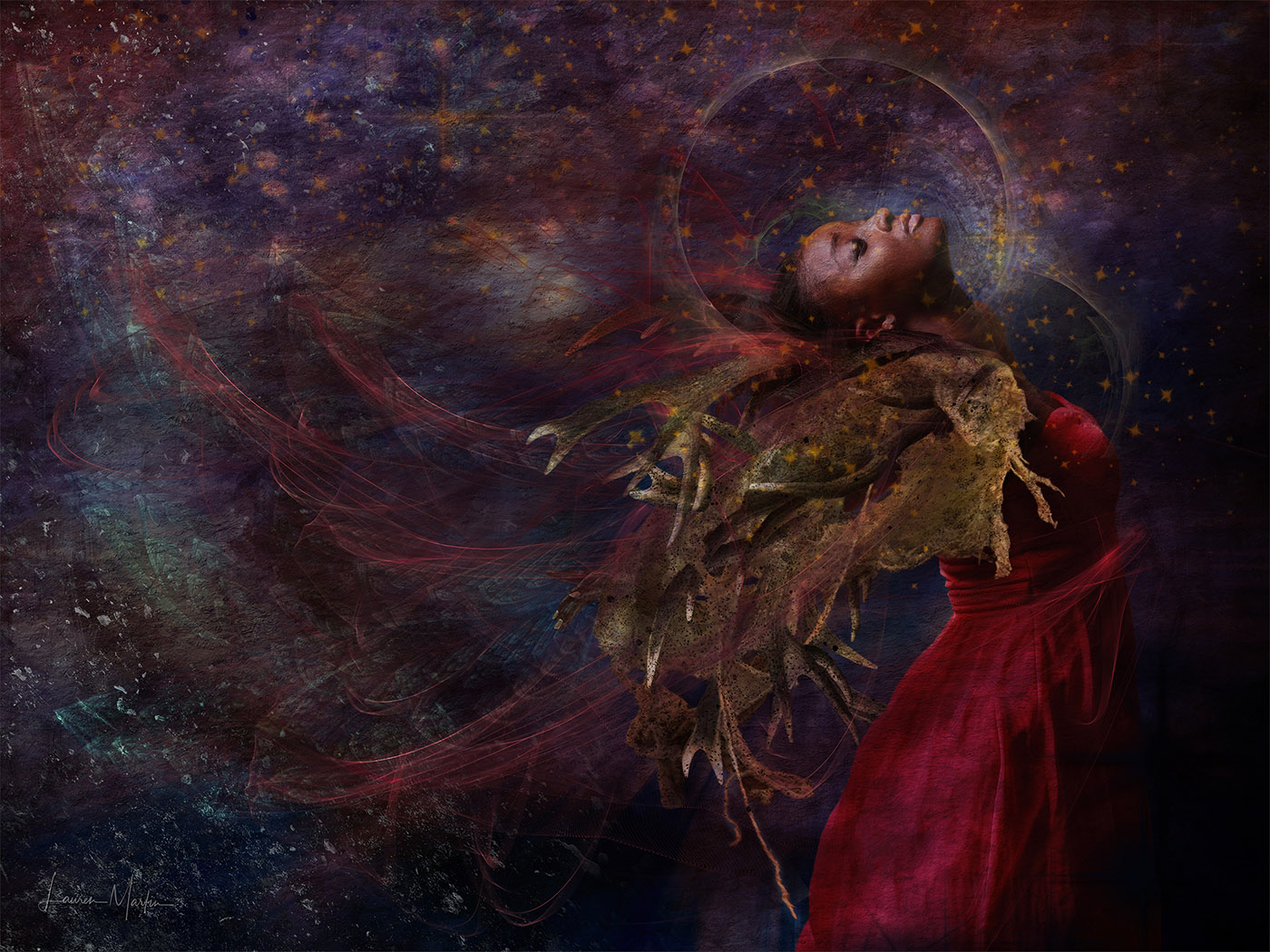
Q. Do you have a particular process you follow in Photoshop?
My PSD files can sometimes be a hot mess because the greatest thing about this digital art is the freedom to experiment. It’s what I missed when working with colored pencils, where a failed experiment meant starting all over. In Photoshop I can play with abandon. As my imagination niggles at me to create something that I just don’t know how to pull off, I have the chance to problem solve and try things out and simply mess around until I find a way to get what I want … or not … in which case I can toss out some layers and go a different direction.
This expansive opportunity to “invent” on my own sometimes leads to unexpected things showing up in my images. Before this sort of freedom I would never have thought of something like putting a mouse underwater instead of fish, so the work often becomes more playful and surprising. Even to me.
The process of working out a piece can take a day or a week. I don’t hurry. I like to linger and allow my mind to decide where to go next, or when to call it done.
I live a life of frequent interruptions, so the time I spend daily is often broken up in short bits — and that certainly impacts how quickly I can complete a project.
I have also learned to interrupt myself on purpose, to take time away now and then so my brain can refresh by being allowed to move off in other directions and on other planes. This means I don’t exactly fall into the category of “prolific artist” but I’m satisfied and refreshed within the process I’ve built up, and that works for me.
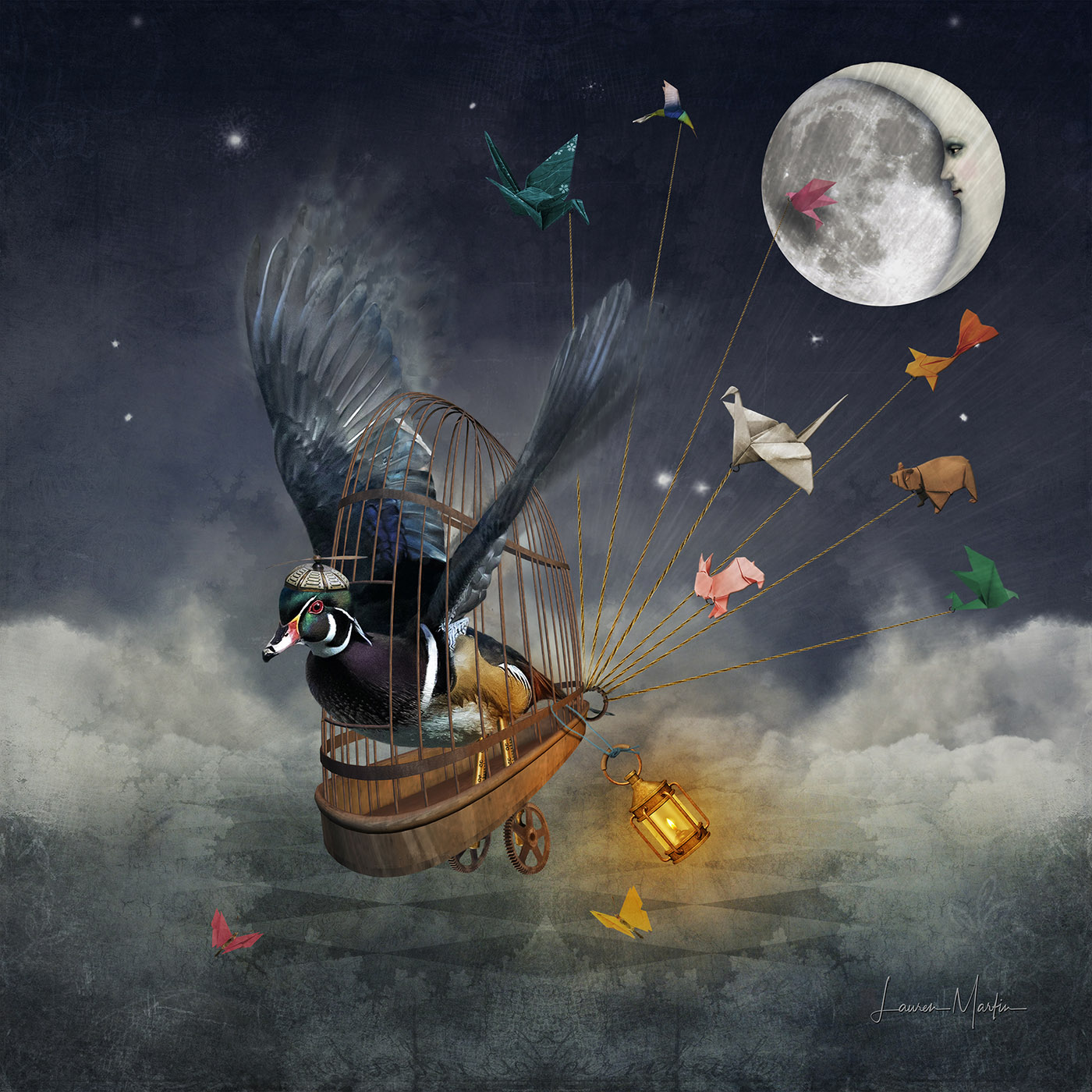
Q. What would you say is the most challenging part of creating digital artwork?
I would say the greatest challenge is in making use of sourced images. Though there are so many available, it poses a challenge when there are particular perspective requirements in the artwork — perspective that can’t quite be applied to an element even with the transform tool. Or when I develop a specific vision but cannot find the particular element to match and must find a workaround or substitute.
There is quite a bit of creative effort required to make the imperfect work perfectly. But in the end it’s truly rewarding to take a handful of disparate bits of content and to creatively manipulate them into a work of art that in the end does match my vision, or more often, expands my earlier vision and makes it better still.
Q. What’s next for you? Where does your artistic journey go from here?
I’ve been doing digital photo creative work in one form or another for ten years now, but I still often feel like an infant. There’s a song I recall from the 90’s with a line that goes, “There’s something out there I can’t resist” and that’s how I feel. There is SO much more out there artistically for me to reach and experience and learn. So many more skills for me to develop. So many ways for me to become better at doing what I do now. So many different styles and directions to dive into.
And I want my work to reach a broad audience. It’s a cold dark space inside the computer hard drive. Art should see the light of day and is meant for sharing. It’s beyond satisfying when someone says, “I had such a lousy day, but then I went home and got lost in your photography and artwork.” Really, in the end, for me at least, that’s what it’s all about.
It would thrill me to some day have a gallery showing that exhibits a collection of my artwork. In the meantime, I pursue opportunities to gain a wider audience both online and locally, always open to every hint of a new direction to take things.
This is truly a lifelong journey of never-ending surprises and new creations.
